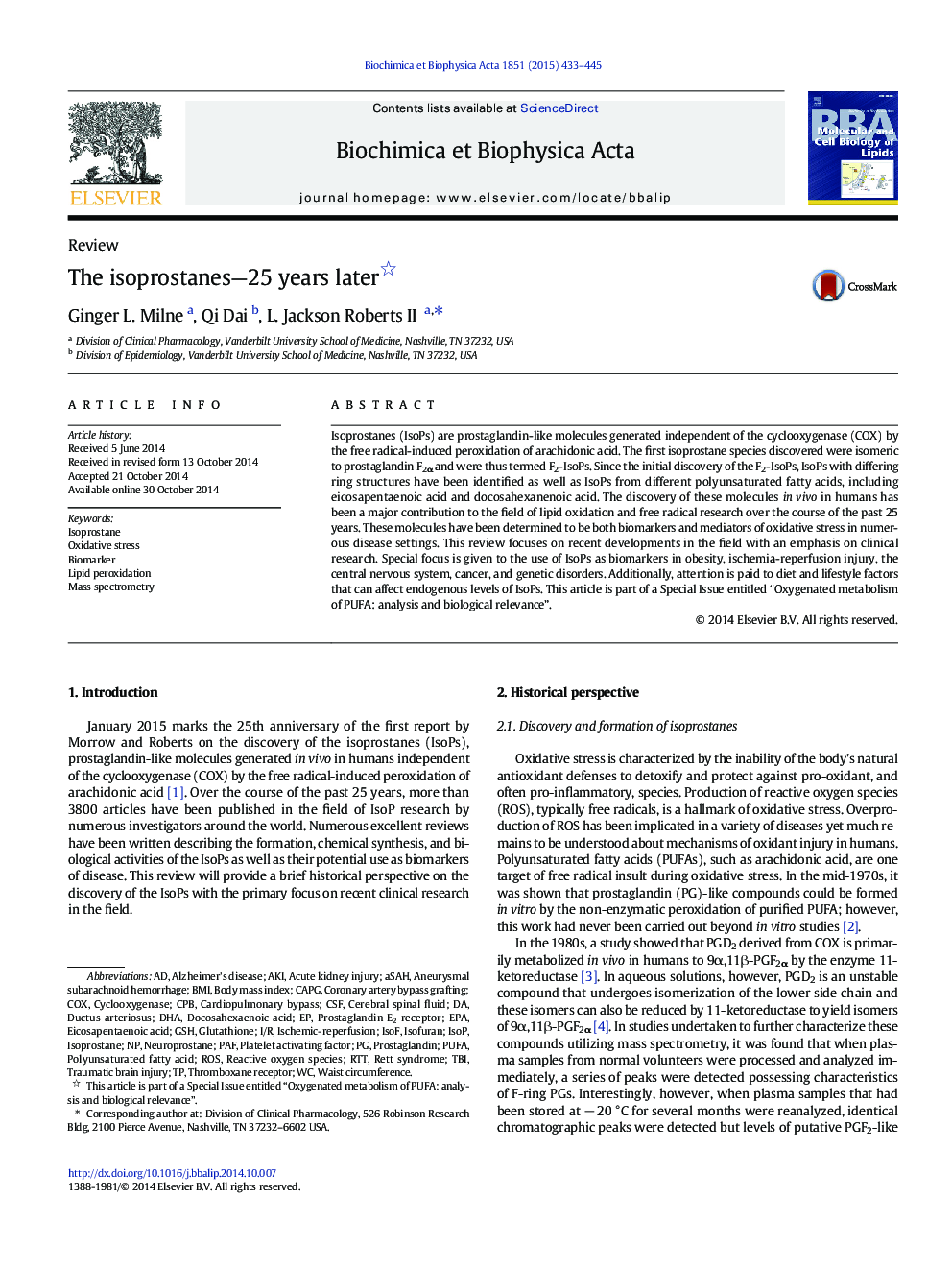| کد مقاله | کد نشریه | سال انتشار | مقاله انگلیسی | نسخه تمام متن |
|---|---|---|---|---|
| 1949132 | 1537719 | 2015 | 13 صفحه PDF | دانلود رایگان |

• Isoprostanes (IsoPs) are formed from the free radical oxidation of arachidonic acid.
• IsoPs are biomarkers of oxidative stress in human disease.
• When quantifying IsoPs it is important to consider their formation and metabolism.
• IsoPs are biologically active and can mediate the pathophysiology of disease.
Isoprostanes (IsoPs) are prostaglandin-like molecules generated independent of the cyclooxygenase (COX) by the free radical-induced peroxidation of arachidonic acid. The first isoprostane species discovered were isomeric to prostaglandin F2α and were thus termed F2-IsoPs. Since the initial discovery of the F2-IsoPs, IsoPs with differing ring structures have been identified as well as IsoPs from different polyunsaturated fatty acids, including eicosapentaenoic acid and docosahexanenoic acid. The discovery of these molecules in vivo in humans has been a major contribution to the field of lipid oxidation and free radical research over the course of the past 25 years. These molecules have been determined to be both biomarkers and mediators of oxidative stress in numerous disease settings. This review focuses on recent developments in the field with an emphasis on clinical research. Special focus is given to the use of IsoPs as biomarkers in obesity, ischemia-reperfusion injury, the central nervous system, cancer, and genetic disorders. Additionally, attention is paid to diet and lifestyle factors that can affect endogenous levels of IsoPs. This article is part of a Special Issue entitled “Oxygenated metabolism of PUFA: analysis and biological relevance.”
Journal: Biochimica et Biophysica Acta (BBA) - Molecular and Cell Biology of Lipids - Volume 1851, Issue 4, April 2015, Pages 433–445